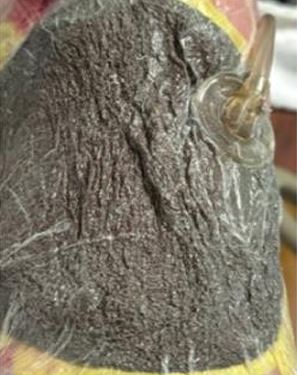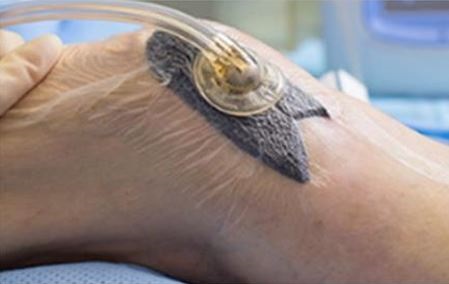Wound Vac
About
- Negative pressure dressing
- Used to encourage tissue ingrowth
- Helps to remove unwanted fluid and debris
- Reduces the amount of dressing changes
Appearance
- Raisin-like appearance when properly compressed and functional
Dressing Frequency
- Typically 2-3 times per week
- Frequency may vary; follow provider orders
Dressing Care
- Remove VAC – this includes adhesive AND foam packing from the wound
- If sponge is stuck, apply saline or Vashe to loosen
- Drizzle with Vashe
- Use only ONE piece of foam in the wound bed to avoid risk of retained foam
- Redress with a transparent drape; make a quarter-sized opening to ensure the trackpad remains functional
- Document output – character, quantity, changes
Troubleshooting
- Ensure the wound vac is always in the “ON”
- Standard settings – continuous -125mmHg
- For a “seal leak” alarm, troubleshoot by checking the outer dressing for leaks; apply a strip of drape over the site
- Ensure clamps are open & no kinks in tubing
- If soiled with stool, change the soiled portion immediately
- If no suction > 2 hours, remove the vac and apply a Vashe-moistened gauze dressing; notify the provider
- If there’s a graft under the vac, ensure gentle removal to leave it in place
- Active Bleeding: Shut off the vac, hold pressure on the dressing, and call the surgeon. Inform them of any blood thinners being taken
- Infection: Monitor for fever over 100.4°F, increased redness, foul odor, or purulent drainage; inform the provider


